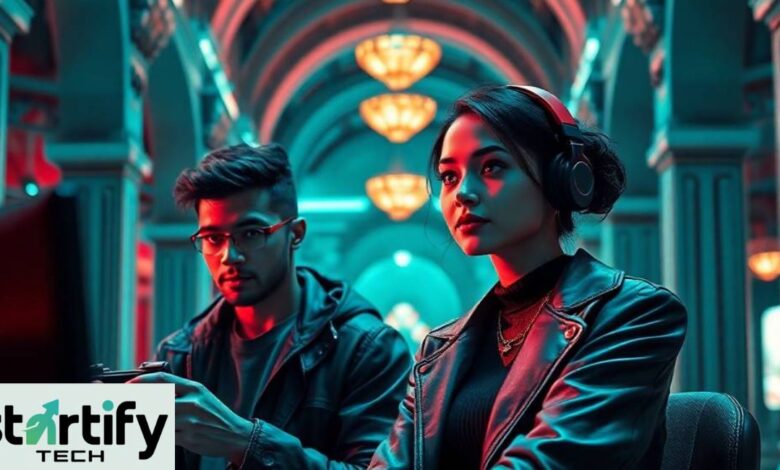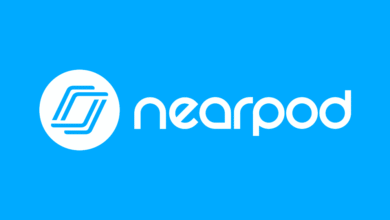The Ultimate Guide to NFT Games Development: Trends, Process, and Future Outlook

The gaming industry has undergone a massive transformation with the introduction of Non-Fungible Tokens (NFTs) and blockchain NFT Games Development technology. NFT games, also known as play-to-earn (P2E) games, allow players to own, trade, and monetize in-game assets securely.
With the global NFT gaming market projected to grow exponentially, developers and entrepreneurs are keen to explore this lucrative space. This comprehensive guide covers everything about NFT game development, including:
- What are NFT Games?
- How Do NFT Games Work?
- Key Features of NFT Games
- Popular NFT Games in 2024
- Step-by-Step NFT Game Development Process
- Tech Stack for NFT Game Development
- Challenges in NFT Game Development
- Future of NFT Gaming
- Why Invest in NFT Game Development?
By the end of this guide, you’ll have a clear roadmap to enter the booming NFT gaming industry.
1. What Are NFT Games?
NFT games are blockchain-based games where in-game assets (characters, skins, weapons, land, etc.) are tokenized as Non-Fungible Tokens (NFTs). Unlike traditional games, where assets are controlled by game publishers, NFT games allow players to:
- Own digital assets permanently.
- Trade or sell them on NFT marketplaces.
- Earn cryptocurrency rewards through gameplay.
Popular examples include Axie Infinity, Decentraland, and The Sandbox.
2. How Do NFT Games Work?
NFT games operate on blockchain networks (Ethereum, Solana, Polygon, etc.) and follow a play-to-earn (P2E) model. Here’s how they function:
A. Blockchain Integration
- Smart contracts manage asset ownership and transactions.
- NFTs represent unique in-game items.
- Cryptocurrencies (ETH, MANA, SAND) facilitate in-game purchases.
B. Play-to-Earn Mechanics
- Players earn tokens or NFTs by completing tasks, battling, or trading.
- Rewards can be cashed out or reinvested in the game.
C. Decentralized Marketplaces
- Players buy/sell NFTs on platforms like OpenSea, Rarible, or Magic Eden.
3. Key Features of NFT Games
To stand out in the competitive NFT gaming market, developers must integrate these essential features:
True Ownership of Assets
- Players fully own their NFTs, which can be traded or sold.
Play-to-Earn (P2E) Model
- Gamers earn crypto rewards, attracting more users.
Interoperability
- NFTs can be used across multiple games (e.g., a sword from one game usable in another).
✔ Decentralized Governance (DAO)
- Players vote on game updates, ensuring community-driven development.
Secure & Transparent Transactions
- Blockchain ensures fraud-proof ownership and trading.
Staking & Yield Farming
- Players stake tokens to earn passive income.
4. Popular NFT Games in 2024
Here are some of the top NFT games dominating the market:
| Game | Blockchain | Genre | Key Feature |
|---|---|---|---|
| Axie Infinity | Ethereum, Ronin | RPG | Breeding & battling NFT creatures |
| The Sandbox | Ethereum | Metaverse | Virtual land ownership & game creation |
| Decentraland | Ethereum | Metaverse | NFT-based virtual world |
| Gods Unchained | Immutable X | Card Game | NFT trading cards |
| Illuvium | Ethereum | Open-World RPG | AAA-quality NFT battles |
5. Step-by-Step NFT Game Development Process

Developing an NFT Games Development involves multiple stages:
Step 1: Market Research & Concept Development
- Analyze competitors (Axie Infinity, Splinterlands).
- Define game genre (RPG, FPS, Metaverse).
- Choose between 2D or 3D graphics.
Step 2: Choose the Right Blockchain
- Ethereum (High security but expensive gas fees).
- Polygon (Low-cost transactions).
- Solana (Fast & scalable).
- Binance Smart Chain (BSC) (Affordable for beginners).
Step 3: Design Game Mechanics & Tokenomics
- Decide on P2E rewards, staking, and NFT rarity levels.
- Create a sustainable in-game economy to prevent inflation.
Step 4: Smart Contract Development
- Develop ERC-721 (NFTs) or ERC-20 (Tokens) contracts.
- Ensure security with audits (CertiK, OpenZeppelin).
Step 5: Game Development (Frontend & Backend)
- Use Unity or Unreal Engine for game design.
- Integrate Web3.js or Ethers.js for blockchain connectivity.
Step 6: NFT Marketplace Integration
- Allow players to trade NFTs on OpenSea, Rarible, or a custom marketplace.
Step 7: Testing & Deployment
- Conduct beta testing with a closed group.
- Launch on mainnet after fixing bugs.
Step 8: Marketing & Community Building
- Promote on Discord, Twitter, and YouTube.
- Partner with NFT influencers.
6. Tech Stack for NFT Game Development
Despite its potential, NFT game development faces hurdles:
High Gas Fees (Ethereum)
Solution: Use Layer 2 solutions (Polygon, Arbitrum).
Scalability Issues
Solution: Opt for Solana or BSC for faster transactions.
Regulatory Uncertainty
Solution: Ensure compliance with local crypto laws.
Player Retention
Solution: Focus on engaging gameplay, not just monetization.
8. Future of NFT Gaming
The NFT gaming industry is evolving rapidly, with trends like:
- Metaverse Integration (Virtual reality NFT games).
- AI-Powered NPCs (Smarter in-game characters).
- Cross-Chain Gaming (NFTs transferable across blockchains).
- Mobile NFT Games (P2E games on Android & iOS).
Experts predict the NFT gaming market to exceed $50 billion by 2030.
9. Why Invest in NFT Game Development?
Lucrative Revenue Models (NFT sales, transaction fees, ads).
Growing Demand (Millions of players entering P2E gaming).
Early-Mover Advantage (The market is still young).
High ROI Potential (Successful games generate millions).
Conclusion
NFT game development is a goldmine for developers and entrepreneurs. By leveraging blockchain, smart contracts, and engaging gameplay mechanics, you can create the next Axie Infinity or The Sandbox.
If you’re planning to enter this space, partner with an experienced NFT game development company to ensure success.



